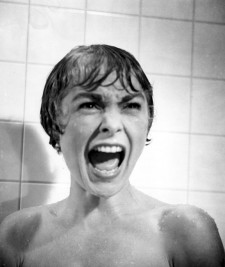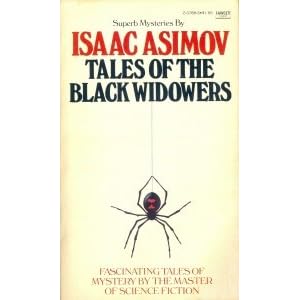 On
most Tuesday and Wednesday evenings, I go to a nearby restaurant on Lake Marble
Falls to hear live music. (That's opposed to Dead Music, which I can’t seem to
ever understand because they're dead.) On Tuesday nights, it's Mike Blakely and
friends singing Tex-Americana. Mike not only writes and sings his original
songs, he is also an author of Western Historical fiction, and has won Spur
awards for a book and also for a song. He has a new book due out early summer,
written with Kenny Rogers about the music business (www.MikeBlakely.com).
On
most Tuesday and Wednesday evenings, I go to a nearby restaurant on Lake Marble
Falls to hear live music. (That's opposed to Dead Music, which I can’t seem to
ever understand because they're dead.) On Tuesday nights, it's Mike Blakely and
friends singing Tex-Americana. Mike not only writes and sings his original
songs, he is also an author of Western Historical fiction, and has won Spur
awards for a book and also for a song. He has a new book due out early summer,
written with Kenny Rogers about the music business (www.MikeBlakely.com).
On Wednesday nights,
it's john Arthur martinez (small caps on first & last name is correct). jAm
was on Nashville Star a few years ago and placed second behind winner Buddy
Jewel. Miranda Lambert came in third this same season. jAm sings a wonderful
mix of original Tex-Mex-Americana-Blues-country-funk ( www.johnArthurmartinez.net). Anyway, another fan of the
live music nights is Lenora, who happens to be a great travel agent. She set up
a Texas Music Cruise with Mike and jAm on Carnival Triumph, which left
Galveston last Saturday, February 2nd, and sailed to Progresso and Cozumel. The
cruise was for friends, family and fans of the musicians and I signed up last
summer to go.
I
drove with my cabinmate, Lottie Issacks, to Galveston last Friday as we planned
to spend the night in a hotel before boarding the ship on Saturday. We followed
the instructions to the hotel, which was located on Seawall Blvd, but I think
we got turned around when we stopped to refill the gas tank so we ended up lost
in the dark, driving around for about an hour. I mean, Seawall Blvd runs for
blocks and blocks along the beach but we just couldn’t seem to find it. Adding
to the confusion was the fact that many of the downtown streets were blocked
off because Galveston has a mini Mardi-Gras celebration and parade. Every time we
thought we could get somewhere we'd run into blocked dead-end. Finally, after
passing a parked taxi the second time, we pulled over and asked the driver for
directions. He hemmed and hawed and started to tell us three different times
then said, "Ladies I'll have to show you, I can't direct you from
here." He led us through several turns and eventually we wound up on the
back parking lot of the hotel. We got checked in and into our room a 9:15 pm.
We washed our faces, smoothed our hair and headed down stairs to the bar for a
much needed glass of wine. We asked our server about dinner and were told that
the dining room closed at 10:00. Since it was only 9:35 at this time, we did
get food. The next morning, we watched the Mardi-Gras parade from our eighth floor
balcony.
At
1:30 we hopped on the shuttle which took us to the Pier. Aboard the Carnival
Triumph, we had a wonderful cabin with a balcony so we were excited about being
able to watch for dolphins. This was Lottie's first cruise and at first she
couldn't believe all the food was included. There were two dinning rooms that
served three meals a day. If you didn't like what your ordered, say your
grilled fish wasn't all that good, all you had to do was send it back and order
Lasagna. Or, if your lobster tail and shrimp didn't fill you up, you could
order a prime rib. And the desserts were out of this world! My favorite was the
molten chocolate cake which is sort of a pudding cake with vanilla ice cream on
the side. Yummy. Besides the dinning room, the aft deck had deli food, burgers
& fries, hot dogs, soups, Chinese, Italian and pizza. If you were still
hungry, you could order room-service 24/7. No wonder people complain about
gaining weight on a cruise.
Our
musicians put on a two-hour show on Monday, Tuesday, and Wednesday. They were
listed as private functions but we could invite anyone we wanted and if someone
wondered in, that was okay. The music was super and everyone had a great
time.
Our
first port of call was Progresso, Mexico. Lottie and I accompanied jAm and his
wife, Yvonna, and we walked to the oldest restaurant in town and had a
wonderful meal. We were sitting near an open window with a wonderful view of
the water and beach. After lunch, we walked over to the beach and while jAm got
a massage, we gals sat under a palapa and drank margaritas. A young man came
along, selling silver jewelry. We each bought something and within seconds, we
were set upon by people selling everything. They hit like vultures to fresh
roadkill! Our next port of call was Cozumel. Since I had been there twice
before, I stayed on board ship and read one of my books.
Later,
we all dressed up for formal dinner night and enjoyed a great meal. Then it was
on to the casino, where I managed to win enough to keep playing for a while.
That last night at sea, we experienced a rather wild storm that had the boat
rocking. It wasn't enough to make us sea-sick, but it was a little scary for
Lottie who said that if the first day had been like this she would have put on
a life-jacket and swam back to shore! Because of the storm, our captain put the
pedal to the metal and we docked two hours early at Galveston Pier Thursday
morning.
To me, this is a fantastic way to
travel. Even without our musicians, there's so much to do on a cruise ship:
bingo, trivia, Broadway shows, comedians, magic shows, shopping, card-playing,
swimming, sunning, fitness room…the list goes on and on. However, you are
constantly walking while on a ship. It seems like everything I wanted to do was
almost always at the other end of the boat from our cabin. Good thing, as it
keeps you from gaining too much from all that wonderful food!
Then, just tonight on the
news I heard that the Carnival Triumph, the ship we were on for five days, and
that put out to sea for a new cruise just hours after we disembarked, had a
fire in the engine room and was adrift in the Gulf! No one was injured and all
the passengers are safe but the ship will have to be towed back to Galveston. I
didn't know anyone going on board the ship, but the stewards and wait persons
we met and who befriended us are on board. May they all be safe. But please,
don’t let that deter you from taking a cruise...it’s one of the best ways to
travel.



































